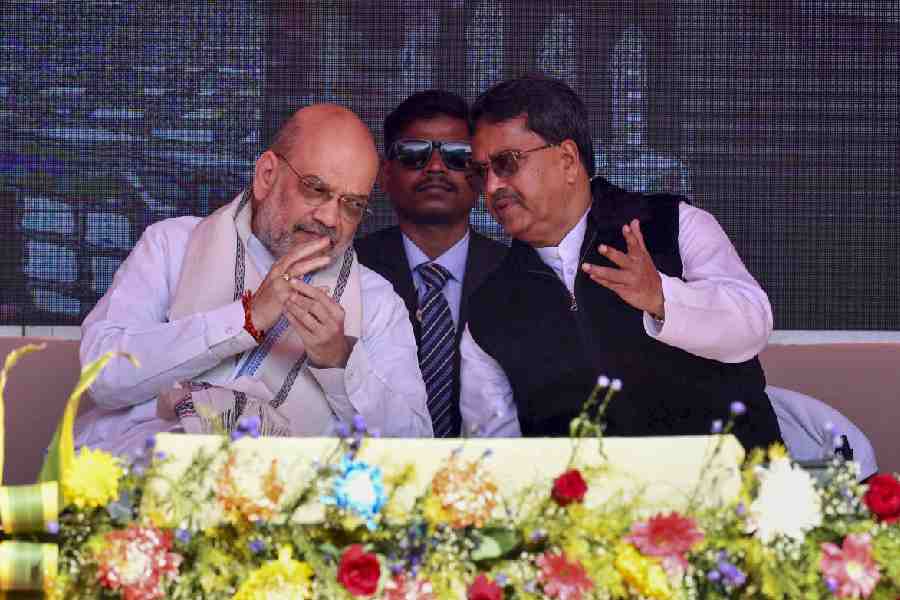 Sunday, 22 December 2024
Sunday, 22 December 2024
 Sunday, 22 December 2024
Sunday, 22 December 2024
Former West Bengal chief minister and a front-ranking Marxist leader Buddhadeb Bhattacharjee will go down in the country's history as a pragmatic communist who kept aside his ideological convictions to woo capital for the industrialisation of his state.
The CPI(M) stalwart - a quintessential Bengali 'bhadralok' with an incorruptible image - will be ironically remembered also for the fall of the 34-year-old Left regime in the state in 2011.
Push for rapid industrialisation
Bhattacharjee, who was the seventh chief minister of the state, pushed hard to shed his party's anti-industry image and promote industrialisation to breathe new life into Bengal's moribund economy.
He actively engaged himself in wooing investors and big capital to set up industries in the state with the primary goal of generating more employment opportunities for the youth.
Despite being a member of the party's powerful Politburo, he fearlessly denounced the politics of 'bandh' (strikes), a common Left parties' tool to register their protests on various issues.
It garnered praise and criticism for him from both within and outside the party. His ambitious vision for rapid industrialisation, however, became the nemesis of both himself and CPI-M, as Mamata Banerjee's TMC deftly capitalised on the anti-land acquisition protests.
The reformer-politician who tried to change the face of the Left
He oversaw the end of an era in which he helmed the longest democratically elected communist government but failed to lead the Left Front to victory for the eighth time in a row in the highly politically polarised state
The Trinamul Congress was able to dethrone the mighty Left Front in 2011 and push the communists to the sidelines of the state's politics.
From literature to politics
Bhattacharjee was born in north Calcutta on March 1, 1944, to a family with a scholarly background. His grandfather Krishnachandra Smrititirtha was a Sanskrit scholar who authored a handbook for priests.
He was a distant nephew of the renowned Bengali poet Sukanta Bhattacharya, who played a significant role in modern Bengali poetry.
He himself was known to be a prolific writer and adept at quoting Rabindranath Tagore in various situations.
Bhattacharya was known for leading a spartan life as he resided in his two-room government flat on Palm Avenue both during his tenure as chief minister and beyond.
After graduating from Presidency College in Bengali, he briefly worked as a teacher before fully committing himself to politics and joined the CPI(M) in the mid-1960s. He was spotted by Promode Dasgupta, who mentored him along with other party leaders from Bengal like Biman Bose, Anil Biswas, Subhas Chakraborty and Shyamal Chakraborty.
He was elected to the Assembly for the first time in 1977 from the Cossipore constituency and became the information and culture minister in the first Left Front government at the age of 33 under Jyoti Basu.
Bhattacharjee earned acclaim for promoting Bengali culture, theatre, literature and quality films, while playing a crucial role in establishing 'Nandan' - the film and cultural centre in Calcutta. But he lost the polls in 1982.
It forced him to shift his constituency to Jadavpur in the southern part of the city and he returned to the state cabinet in 1987. He, however, resigned from the cabinet suddenly in 1993 after being allegedly rebuked for his rude behaviour with a bureaucrat.
It led him to withdraw from active politics and pen a play, 'Dushshamai' (Bad Times).
The scene changed drastically when the CPI(M), searching for a successor to the aged Basu and facing strong anti-incumbency, reintegrated Bhattacharjee into the state cabinet initially as the state home minister.
Within three years, he assumed the role of deputy chief minister and eventually succeeded Basu as the chief minister in November 2000.
The following year he led the Left Front to victory in the state assembly polls and embarked on ambitious initiatives for rapid industrialisation in the agrarian state.
He set aside his ideological beliefs to attract investors and address the flight of capital from Bengal during the Left regime.
Despite being a Politburo member, he pulled no punches in publicly denouncing CITU, the party's trade union wing, for calling strikes and bandhs. The step apparently was liked by the people as his popularity surged and the LF scripted a resounding victory in 2006 assembly polls.
Journey of ‘Brand Buddha’
Bhattacharjee persistently pursued his efforts for the industrialisation of Bengal and earned the moniker of 'Brand Buddha' from the media to signify his government's developmental initiatives. His greatest feat was attracting Tata Motors to establish a small car plant at Singur, a fertile agricultural area not far from the city.
However, it faced opposition from farmers, a key vote bank of the Left parties, and eventually became one of the key reasons for the downfall of the Marxist government.
His tenure also faced the brunt of the movement at Nandigram, where, under the leadership of TMC supremo Mamata Banerjee, the agitation against the acquisition of farmland for an SEZ led to a significant erosion in LF's vote bank. The police fired on protestors on March 14 in 2007, which resulted in the death of 14 people and queered the pitch for the Marxists.
His failure to take any decisive action to end Banerjee's sit-in near the proposed small car plant at Singur too went against him and led to Tata's departure from the industry-starved state in January 2008.







